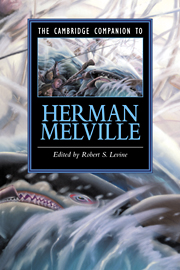Book contents
- Frontmatter
- Introduction
- 1 “Race” in Typee and White-Jacket
- 2 The Tambourine in Glory
- 3 Moby-Dick as Revolution
- 4 Pierre's Domestic Ambiguities
- 5 A----!
- 6 Melville the Poet
- 7 Melville's Traveling God
- 8 Melville and Sexuality
- 9 Melville, Labor, and the Discourses of Reception
- 10 Bewildering Intertanglement
- 11 Melville and the Avenging Dream
- Afterword
- Selected Bibliography
- Index
- Series List
2 - The Tambourine in Glory
Published online by Cambridge University Press: 28 May 2006
- Frontmatter
- Introduction
- 1 “Race” in Typee and White-Jacket
- 2 The Tambourine in Glory
- 3 Moby-Dick as Revolution
- 4 Pierre's Domestic Ambiguities
- 5 A----!
- 6 Melville the Poet
- 7 Melville's Traveling God
- 8 Melville and Sexuality
- 9 Melville, Labor, and the Discourses of Reception
- 10 Bewildering Intertanglement
- 11 Melville and the Avenging Dream
- Afterword
- Selected Bibliography
- Index
- Series List
Summary
I pushed on my way, till I got to Chapel-street, which I crossed; and then going under a cloister-like arch of stone. . . . I emerged into the fine quadrangle of the Merchants' Exchange.
Herman Melville, RedburnI walk a world that is mine; and enter many nations, as Mungo Park rested in African carts.
Herman Melville, MardiIn his first eleven years, Herman Melville lived in an environment in which slavery was being gradually legislated out of existence, its shadow receding across New York State. Despite the movement to abolish slavery, however, denials of freedom less severe but no less real were much in evidence. There was, for that matter, little indication that racial equality was being considered by northern whites, most of whom did not oppose southern slavery.
Melville was born in August 1819, a time when slave music and dance enjoyed brilliantly ironic expression in public and private, North as well as South. In New York City and across the state, slaves were observed dancing and making music on street corners and in marketplaces, as if preparing for the Pinkster Festival that, once a year in May for several days and at times in multiple locations, engaged the attention of white spectators. As in expressions of black culture in America generally, participants in festivals revealed but a portion of their art because it was dangerous to communicate clear signs of African spirituality.
- Type
- Chapter
- Information
- The Cambridge Companion to Herman Melville , pp. 37 - 64Publisher: Cambridge University PressPrint publication year: 1998

